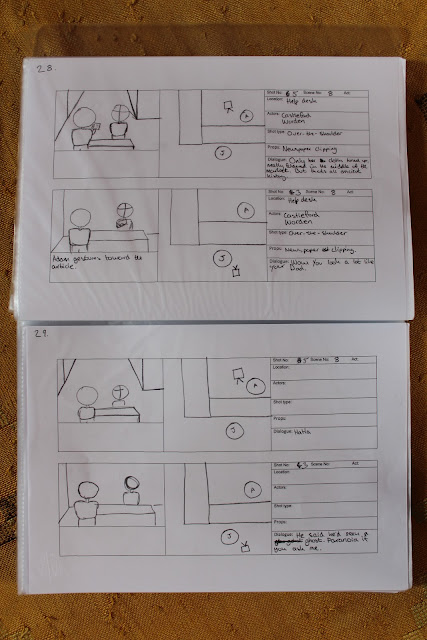My vision for the film, due mainly to the location we were shooting in, was to make a feature of symmetry. For every shot I carefully considered the framing of the subject within his environment. To me, and despite the scale of the market, the result is that the building looks to be closing in around him. The bold imagery also gives the location its own character, as I've previously mentioned this is a method inspired by Kubrick's work on The Shining.
This is one of my favorite shots in the film. I like my decisions to track forward in both this and the previous shot, it give the sequence a natural progression when cut together while at the same time functioning as a tool to suggest an increasing intensity. Another aspect I like is how close to the lens the characters torch gets as the scene progresses, I feel it adds to the drama and allows the audience to get a better understanding of the characters emotions.
While there are a lot of tracking shots in the film I hope it doesn't come across as a film made by a film student who recently discovered the equipment and therefore used it at every available moment. When I was story boarding the film, while I wanted to imitate elements of The Shining, I wanted there to be deeper meaning to the use of tracking shots aside from the fact its visually interesting. As with the example above, I used a track and dolly either when I wanted to signify an increase of emotion. A second reason was that, as I've also mentioned, I wanted to suggest an element of voyeurism at all times, therefore, a lot of the time it was my intent to suggest a presence through the moving of the camera.
Below is one of my favorite sequences, it was a very simple concept that I feel works very well when cut together. The use of a shoulder rig was of great help for a number or shots, this one in particular though where I use a whip pan to reveal an aspect of Adams torment. The shoulder rig was also used in place of a tripod at times, furthering suggested POV and voyeurism.


























































